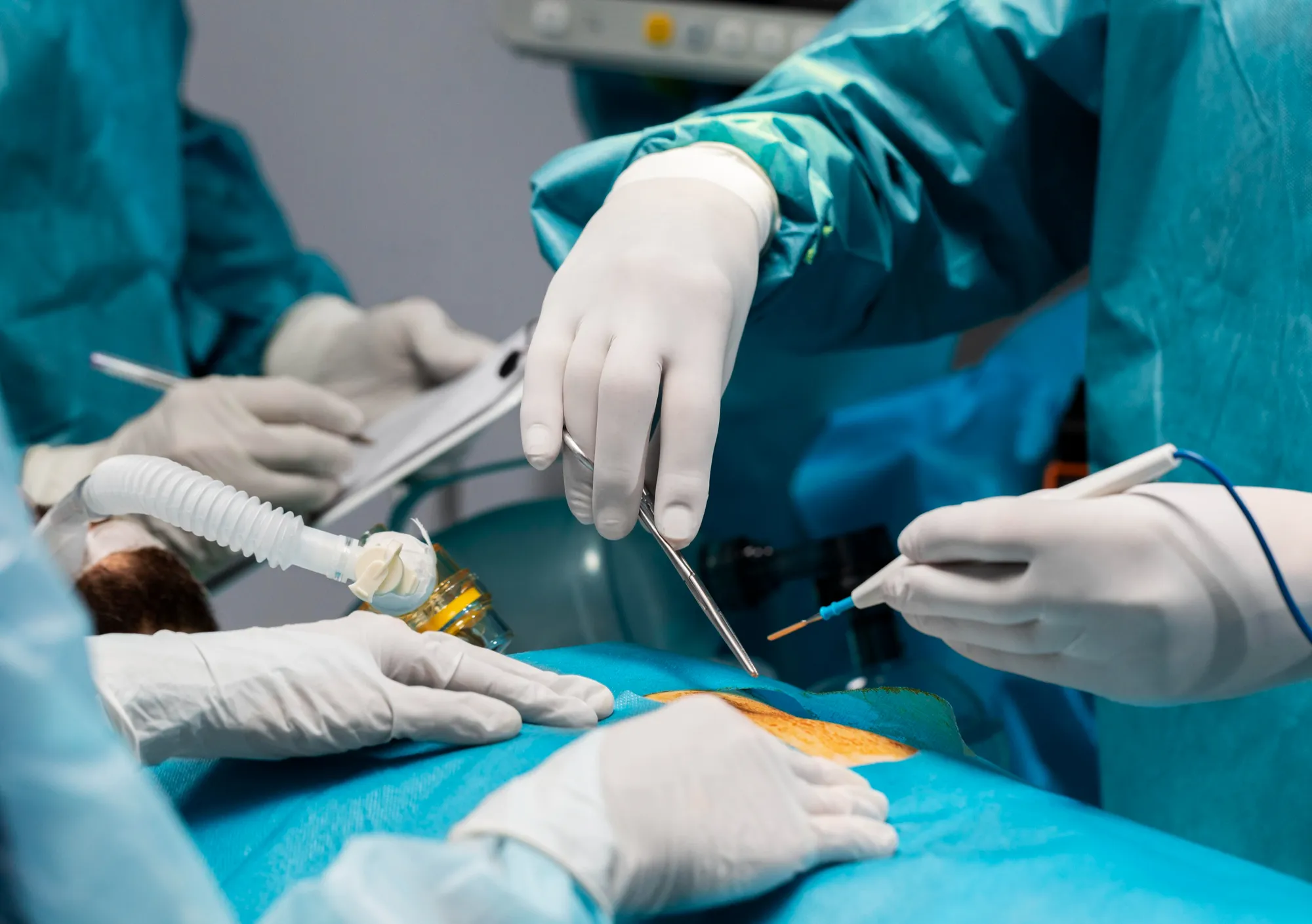Introduction
In the dynamic field of colorectal surgery, laparoscopic techniques have transformed the way restorative resections are approached. Among these advancements, the laparoscopic mobilization of the splenic flexure stands out as a significant procedural step, promising improved outcomes for patients undergoing colorectal resection.
A pivotal study published in the Mar-Apr 2019 issue of “Chirurgia (Bucharest, Romania: 1990)” sheds light on the intricacies of this minimally invasive technique and its implications for surgical practice. In this news article, we will delve deep into the study’s findings, reflecting on the background, results, and conclusions presented by
Background
Restorative colorectal resection is a procedure commonly performed for various conditions affecting the sigmoid colon, rectum, and other parts of the colorectal region. The technique’s primary goal is to excise diseased segments while maintaining the continuity of the gastrointestinal tract, fostering better post-operative function and quality of life for the patient.
The mobilization of the splenic flexure, the point where the transverse colon turns downward into the descending colon, is crucial for achieving necessary tension-free colorectal anastomosis. It’s a technically demanding step, necessitating precision and expertise to avoid injury to surrounding structures like the spleen, pancreas, and major blood vessels.
Study Highlights
The study published with DOI: 10.21614/chirurgia.114.2.268 focuses on laparoscopic mobilization as the initial phase of restorative colorectal resection. It emphasizes the importance of this approach in achieving satisfactory oncological and functional outcomes.
The authors conducted an in-depth analysis comparing traditional open surgery with laparoscopic approaches to mobilize the splenic flexure. They also explored the learning curve associated with this minimally invasive technique, highlighting its benefits and potential challenges for surgical teams.
Results
The findings of the study demonstrate numerous advantages to adopting a laparoscopic approach. Patients who underwent laparoscopic mobilization of the splenic flexure experienced lower post-operative pain, reduced scarring, and shorter recovery times than those who underwent open procedures.
Moreover, the laparoscopic procedure showed a comparable success rate in achieving oncological clearance, with an adequate margin of excision. Notably, the minimally invasive technique also resulted in better functional outcomes, as evidenced by fewer complications like anastomotic leaks and bowel obstructions.
As with any advanced surgical technique, the study stressed the learning curve for surgeons. However, with proper training and accumulated experience, colorectal surgeons could perform laparoscopic mobilization efficiently and effectively, leading to widespread adoption in clinical practice.
Conclusions
Concluding from the study, laparoscopic mobilization of the splenic flexure emerges as a viable and recommendable first step in restorative colorectal resection. The technique’s minimally invasive nature aligns with current trends in surgical care, aiming for less traumatic procedures with quicker recoveries.
Despite the challenges associated with the learning curve, the authors suggest that the long-term benefits of laparoscopic techniques make it worth the initial effort investment. Training programs and workshops could thus play a crucial role in the dissemination and proficiency of laparoscopic splenic flexure mobilization among colorectal surgeons.
Implications for Colorectal Surgery
This study’s findings have far-reaching implications for the field of colorectal surgery. They suggest that the laparoscopic mobilization of the splenic flexure should become a standard of care, potentially leading to overall improvements in the safety and efficacy of colorectal surgeries.
The paper’s insights also pave the way for further research, particularly in the realm of robotic surgical procedures, which may offer even greater precision and improved outcomes in the future.
References
1. Copăescu, C., Bărbulescu, L., & Tomulescu, V. (2019). Laparoscopic Mobilization of the Splenic Flexure as the First Step of Restorative Colorectal Resection. Chirurgia (Bucharest, Romania: 1990), 114(2), 268-277. doi:10.21614/chirurgia.114.2.268
2. Fleshman, J., Sargent, D. J., Green, E., Anvari, M., Stryker, S. J., Beart, R. W., … & Nelson, H. (2007). Laparoscopic colectomy for cancer is not inferior to open surgery based on 5-year data from the COST Study Group trial. Annals of surgery, 246(4), 655-662. doi: 10.1097/SLA.0b013e318155a762
3. Jayne, D. G., Guillou, P. J., Thorpe, H., Quirke, P., Copeland, J., Smith, A. M., … & Brown, J. M. (2007). Randomized trial of laparoscopic-assisted resection of colorectal carcinoma: 3-year results of the UK MRC CLASICC Trial Group. Journal of Clinical Oncology, 25(21), 3061-3068. doi: 10.1200/JCO.2006.09.7758
4. Veldkamp, R., Kuhry, E., Hop, W. C., Jeekel, J., Kazemier, G., Bonjer, H. J., … & Cuesta, M. A. (2005). Laparoscopic surgery versus open surgery for colon cancer: short-term outcomes of a randomized trial. The Lancet Oncology, 6(7), 477-484. doi: 10.1016/S1470-2045(05)70221-7
5. Nelson, H., Sargent, D. J., Wieand, H. S., Fleshman, J., Anvari, M., Stryker, S. J., … & Beart, R. W. (2004). A comparison of laparoscopically assisted and open colectomy for colon cancer. New England Journal of Medicine, 350(20), 2050-2059. doi: 10.1056/NEJMoa032651
Keywords
1. Laparoscopic Splenic Flexure Mobilization
2. Restorative Colorectal Resection
3. Minimally Invasive Colorectal Surgery
4. Oncological Outcomes in Colorectal Surgery
5. Learning Curve in Laparoscopic Surgery
Conclusion
The laparoscopic mobilization of the splenic flexure stands as a pivotal step in the advancement of restorative colorectal surgery. With conclusive evidence supporting its benefits, surgeons are encouraged to adopt this minimally invasive technique and foster future improvements in both the technology and the proficiency required to perform such procedures. The findings of the study advocate for a shift in clinical practices, promising a new era of surgical care with laparoscopy at the forefront.
